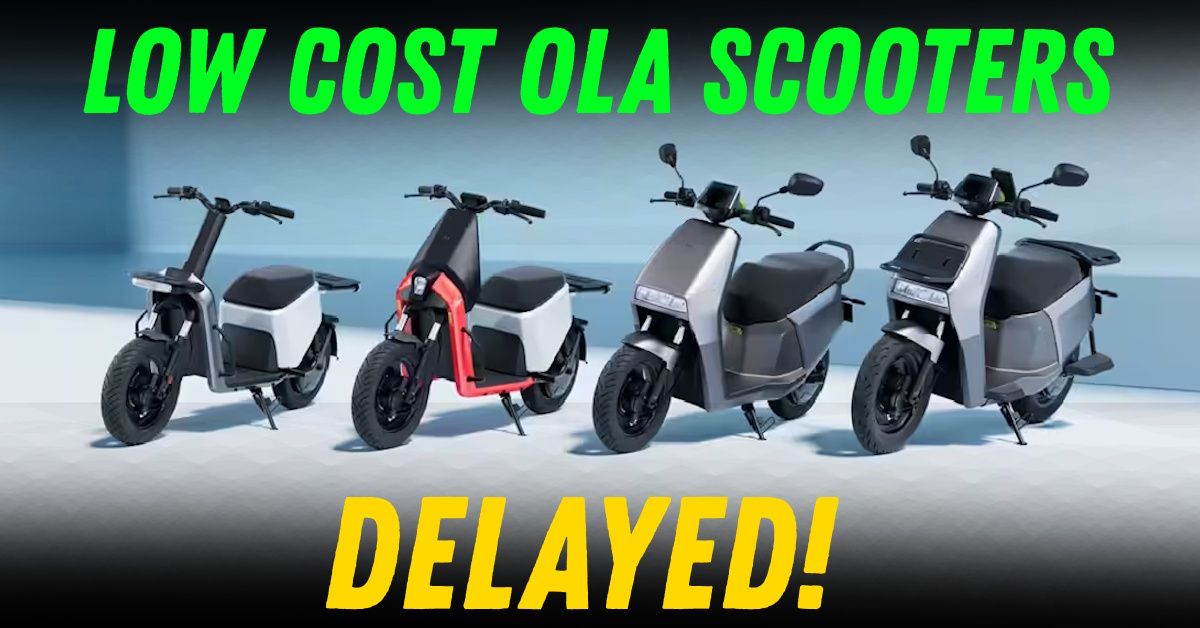Ola Electric's Most Affordable Scooters Delayed: Here's Why


Ola Electric has pushed back the launch of its affordable S1 Z and Gig electric scooters as the once-dominant player grapples with plummeting sales and intensifying competition from legacy automakers. The postponement comes at a critical juncture for the company, which has slipped from market leadership to third position in India's increasingly competitive electric two-wheeler landscape.
In a communication to shareholders, Ola Electric confirmed it is delaying the rollout of both the S1 Z and Gig scooter range. These models, initially announced in November 2024, were slated for delivery in April and May 2025 respectively. The company has not provided revised delivery timelines, leaving potential customers in limbo.
"We are delaying the S1 Z, Gig/Gig+ and some other future products and will sequentially launch these models such that each product receives the right customer mindshare," Ola Electric founder and MD Bhavish Aggarwal informed investors.
The postponed models represent Ola's attempt to diversify its product portfolio. The Gig series, priced competitively between Rs 39,999 and Rs 49,999, marked Ola's first foray into the B2B electric scooter segment. The S1 Z, priced at Rs 59,999, targeted budget-conscious urban commuters and would have been one of the most affordable offerings in Ola's lineup.
Notably, both models would have featured removable battery packs - a first for the company - allowing for more flexible charging options.
The launch delay coincides with a worrying decline in Ola's sales figures. According to the government's Vahan portal, the company's registrations in May 2025 dropped to just 15,221 units – a steep 60% decline from the 37,388 units sold in May 2024. The fourth quarter of FY25 saw Ola's total deliveries fall to 51,375 units.
This sales slump has had significant market implications. Once commanding over half the electric two-wheeler market just a year ago, Ola's share has shrunk to approximately 20% in May 2025, placing it behind TVS Motor (25%) and Bajaj Auto (22.6%).
February 2025 proved particularly challenging, with sales plummeting to 8,647 units from 33,906 units in February 2024, a staggering 74% year-on-year decline. While Ola contested these figures, citing "optimisations of the registration process," the downward trend remains unmistakable.
As Ola struggles, traditional automakers are capitalising on the growing demand for electric two-wheelers. Bajaj Auto's Chetak emerged as India's top-selling electric scooter in Q4 FY25, with record-breaking sales of 34,863 units in March 2025 alone – averaging over 1,124 scooters daily.
TVS Motor's iQube has also gained significant traction, contributing to the company's rising market share. These legacy brands are leveraging their established dealer networks, manufacturing expertise, and brand trust to outpace newer entrants like Ola.
The launch delays and sales decline form part of a broader pattern of difficulties for Ola Electric. The company recently received a credit rating downgrade from ICRA, from 'A (Negative)' to 'BBB+ (Negative),' reflecting concerns about its financial health.
Ola is also facing regulatory scrutiny over sales reporting practices and quality issues. The company has had to implement significant workforce reductions, with major layoffs reported in recent months.
Amid these challenges, Ola is recalibrating its strategy to focus on its Roadster motorcycle platform, which began deliveries on May 21 after several delays. The company is also working to improve operational efficiency, expanding to approximately 4,000 stores nationwide and reducing service turnaround times to 1.1 days.
While electric two-wheelers gained significant momentum in FY25, crossing the one-million sales mark, growth is slowing compared to previous years. For Ola, regaining market leadership will require addressing product delays, quality concerns, and fierce competition in an increasingly crowded electric mobility landscape.